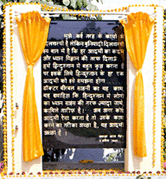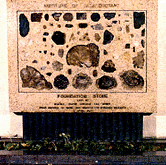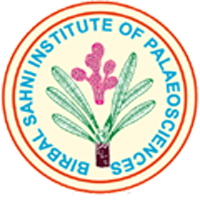History

The Birbal Sahni Institute of Palaeobotany commemorates the name of its reverend founder, Professor Birbal Sahni, one of the great sons of modern India. In September 1939 a committee of palaeobotanists working in India was formed, with Professor Sahni as Convener, to coordinate palaeobotanical researches and to publish periodical reports. The first report entitled ‘Palaeobotany in India’ appeared in 1940 and the last in 1953. On May 19, 1946 eight members of the committee, who then happened to be working at Lucknow (K.N. Kaul, R.N. Lakhanpal, B. Sahni, S.D. Saxena, R.V. Sitholey, K.R. Surange, B.S. Trivedi and S. Venkatachary), signed a Memorandum of Association to form a Palaeobotanical Society. A trust that name was created on 3rd June, under the Societies Registration Act (XXI of 1860), with a nucleus of private funds and immovable property, a reference library and fossil collections dedicated by Professor Birbal Sahni and Mrs. Savitri Sahni, to the promotion of original research in Palaeobotany.
This trust was assigned the job for the foundation of a Research Institute. By a resolution passed on 10th September 1946, the Governing Body of the Society established an ‘Institute of Palaeobotany’ and appointed Professor Sahni as its first Director in an honorary capacity. Pending the acquisition of permanent place the work of the Institute was carried out in the Department of Botany, Lucknow University, Lucknow. In September 1948, the Institute moved to its present campus received as a generous gift of an estate comprising a large bunglow on 3.50 acres of land, from the Government of the then United Provinces. Soon plans were made for erecting a building for the Institute. The Foundation Stone for the new building was laid on April 3, 1949 by the Prime Minister Pandit Jawaharlal Nehru. Unfortunately after a week on 10th April 1949 Prof. Sahni passed away leaving the responsibility to establish the Institute to his wife Mrs. Savitri Sahni. Untiring efforts and zeal of Mrs. Savitri Sahni led to the completion of the new building by the end of 1952. The Prime Minister Pandit Jawaharlal Nehru dedicated the building to science on January 2, 1953, amidst a galaxy of scientists from India and abroad. From December 1949 to January 1950, Prof. T.M. Harris of the University of Reading, England, served as Advisor to the Institute. In May 1950 Dr. R.V. Sitholey, Assistant Director was appointed as Officer-in-charge for carrying out current duties of the Director under the supervision of the President Mrs. Savitri Sahni.

In 1951, the United Nations Educational, Scientific and Cultural Organization (UNESCO) included the Birbal Sahni Institute of Palaeobotany in its Technical Assistance Programme, under which Professor O.A. Høeg of the University of Oslo, Norway, served as its Director from October, 1951 to the beginning of August, 1953. A short time after Prof. Høeg’s departure, Dr. K.R. Surange was made the Officer-in-charge, under the supervision of the President, Governing Body of the Palaeobotanical Society. In October 1959 Mrs. Savitri Sahni, in addition to being the President of the Society, also became the President of the Institute and in charge of administration, and at the same time Dr. Surange was appointed as Director having charge of academic and research activities. In the end of 1967 a stage came when it was felt that the Palaeobotanical Society should function as a purely scientific body and the Institute as a separate organization. In January 1968, Prof. K.N. Kaul was elected as the President of the Society. A new constitution was framed in the meantime, under which Birbal Sahni Institute of Palaeobotany was registered as a separate body on July 9, 1969. Thus, the Palaeobotanical Society in November, 1969, transferred and delivered the possession of Institute to this new body whereby the Birbal Sahni Institute of Palaeobotany came under the management of a new Governing Body. Since then, the Institute functions as an autonomous research organization and is funded by the Department of Science and Technology, Government of India.

